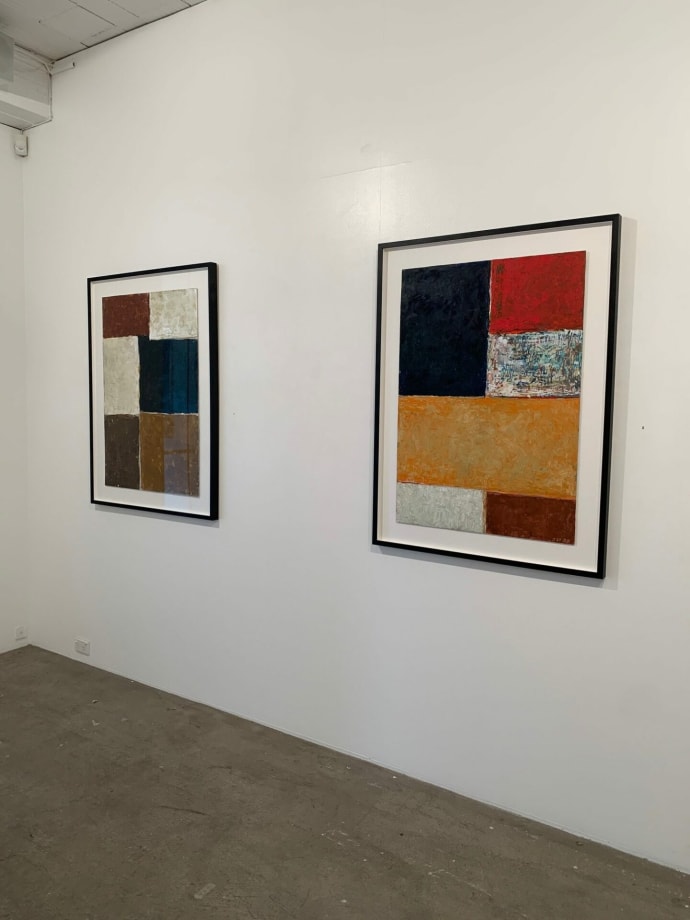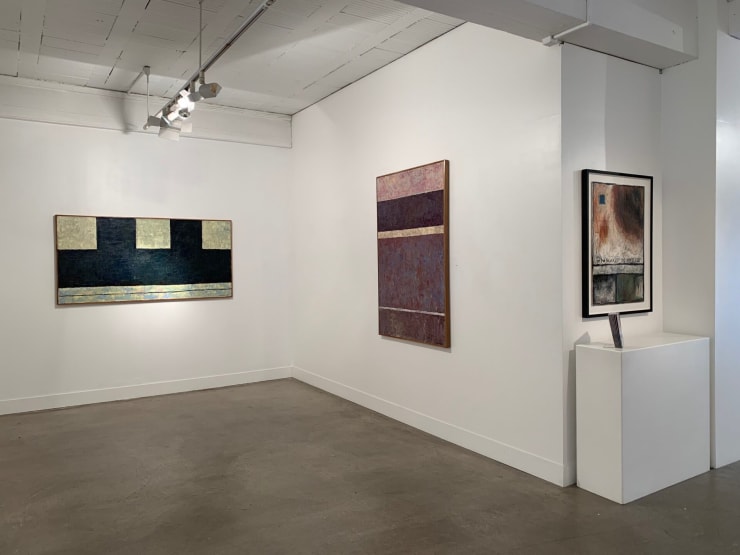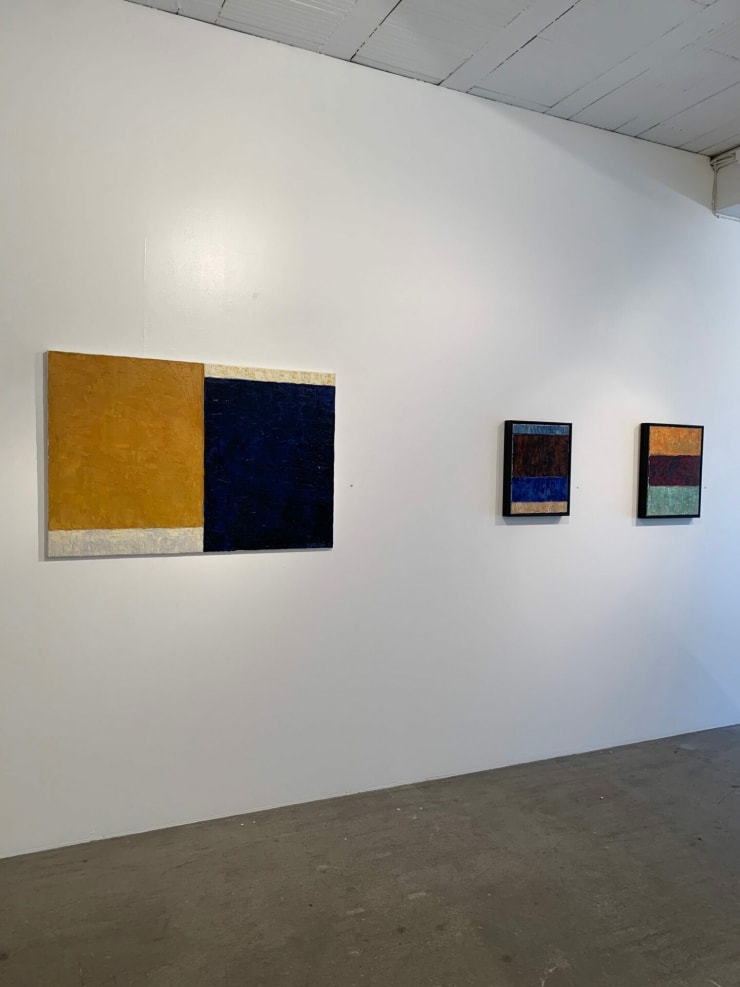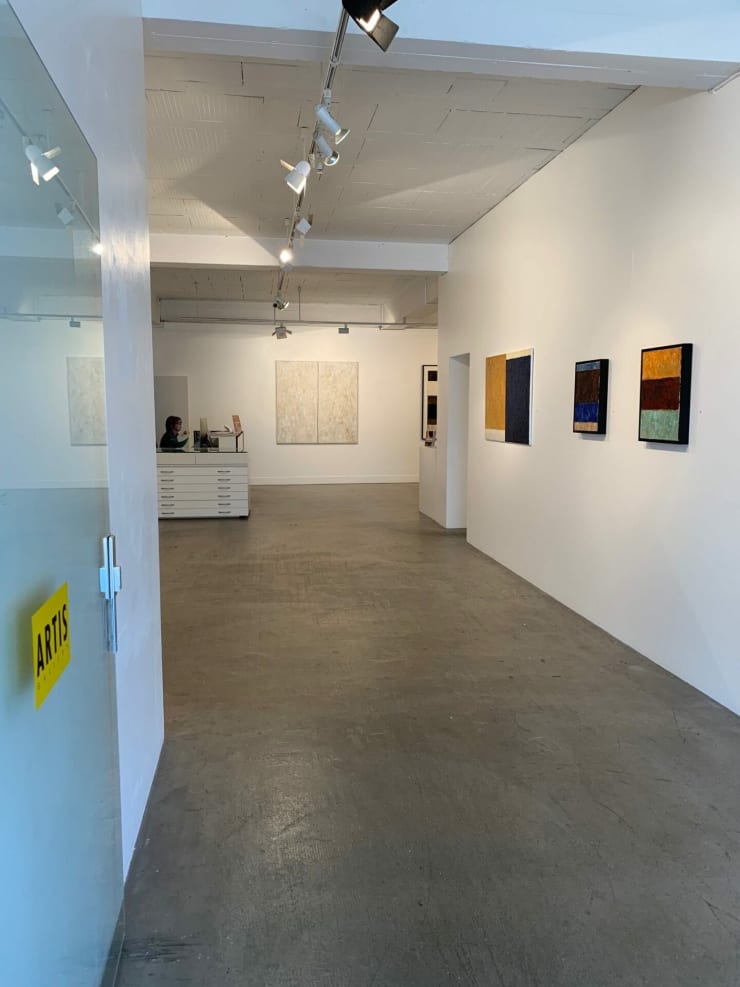JS Parker: Oh No Never Let the Spirit Die
It’s easy to imagine J.S. (John) Parker in his Blenheim studio energetically laying down paint with his trusty palette knife while the music of Van Morrison (‘Spirit’ is from his 1980 album Common One) blasts through the speakers. It is three years since Parker died (1944-2017) but his rare spirit lives on in these robustly lyrical paintings from the last decades of his career.
It is no accident that Plainsongs – the title with which Parker identified most of his later paintings – has a musical origin since music of all kinds – rock, jazz, blues, folk, classical – frequently accompanied his practice. His paintings resemble ‘Plainsong’ – medieval liturgical music chanted in unaccompanied unison – in their frequent repetition of a few basic forms: rectangles, squares, straight lines, while avoiding monotony through a myriad different colours. Many of his subtitles also have musical connotations, for example: Plainsong – Two Part Harmony – Blue.
However, Plainsong also has several connotations other than musical ones. It is a quadruple pun alluding simultaneously to geography, personality and aesthetics as well as to music. Unpacking the various connotations of this term locates us firmly within the force-field of Parker’s practice.
He lived much of his adult life on the Wairau Plains. The flat expanses and geometrical divisions of that landscape (and its Canterbury equivalent), paddocks, vineyards, roads and horizons, translated into abstract pictorial geometry, figure repeatedly in his work, as observed at different times of day or season and under various atmospheric conditions, as, for example, in Plainsong Hymn to Light – Rose Evening, or Plainsong: Duality – For the Blue Air.
Peter Simpson






